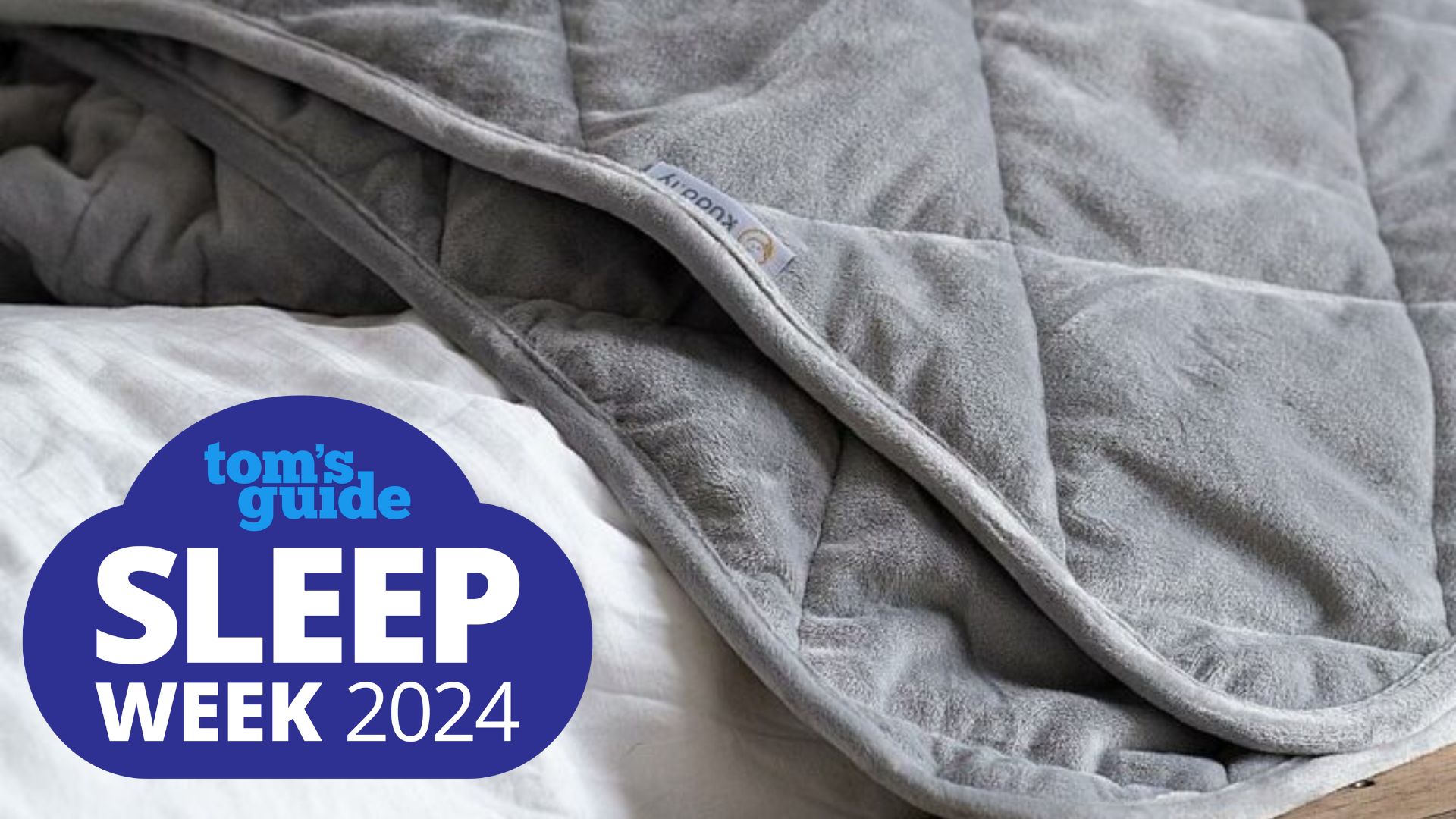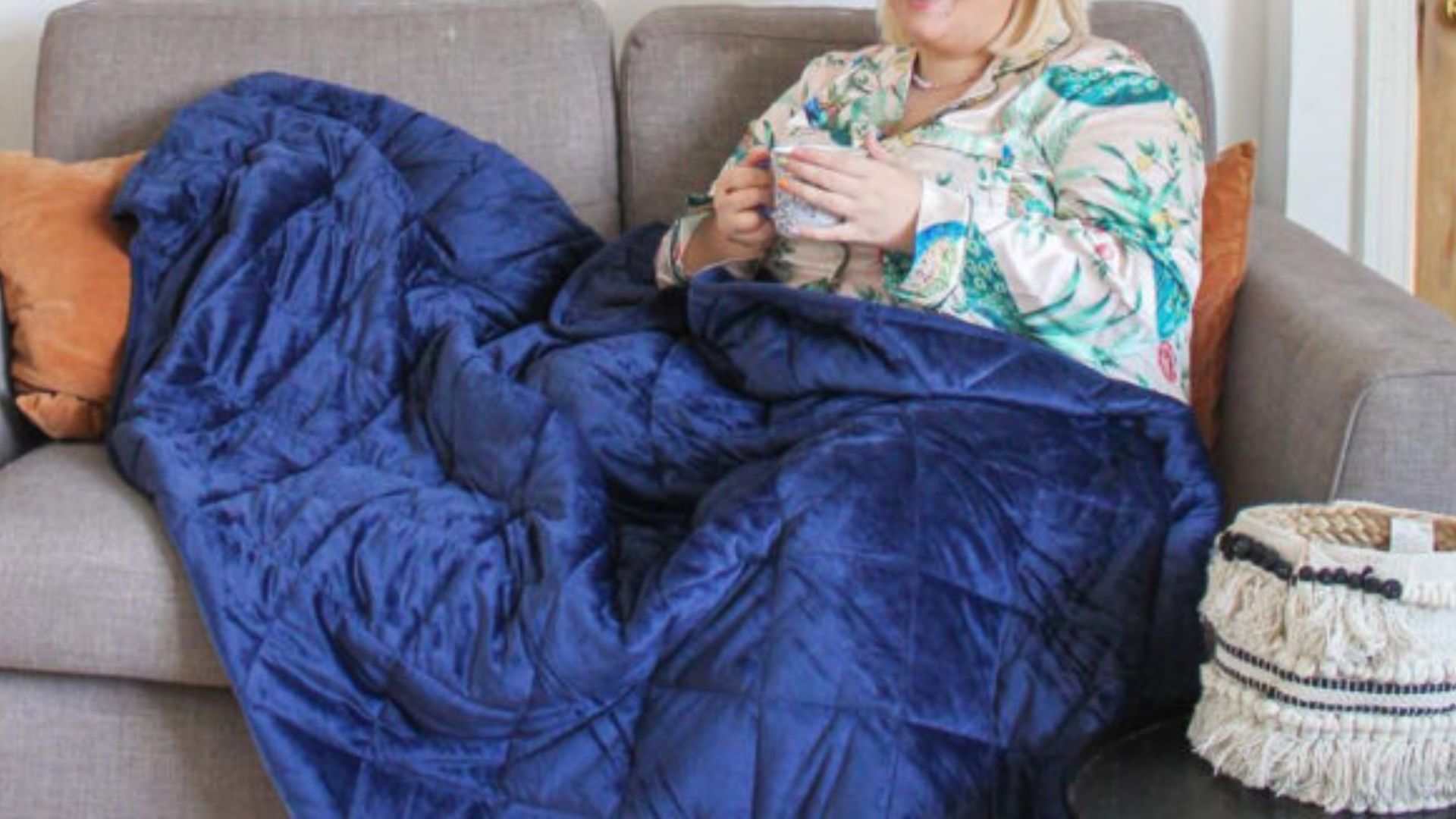3 mistakes I made when using my first ever weighted blanket
I made three big mistakes when sleeping with a weighted blanket for the first time. Here's how you can avoid them...

Weighted blankets have become increasingly popular in recent years thanks to their calming, body-hugging properties. I, however, seemed to have missed this trend and have found my duvet to provide more than enough comfort. In fact, it was only until I started working as a sleep writer that the benefits of weighted blankets even came to my attention and made me consider given these therapeutic quilts a try.
While I already know how the best mattress can provide the right comfort for sleep, weighted blankets have gained a reputation for enhancing sleep and reducing stress, too. Curious as to whether weighted blankets actually work, I decided to try out the Kudd.ly Weighted Blanket, a five-star rated sleep product made with the brand's trademark fleece material and micro glass bead filling.
I tried my first ever weighted blanket out earlier this year ahead of Sleep Awareness Week 2024. While my full review of the Kudd.ly Weighted Blanket is coming soon, here's my experience so far, including the three mistakes I made that I'd love for you to avoid.
Nectar Mattress: up to 40% off at Nectar Sleep
During Sleep Awareness Week, you can save up to 40% on memory foam and hybrid mattresses at Nectar Sleep. We rate the Nectar Memory Foam as great option for sleepers with a smaller budget seeking a breathable and supportive all-foam bed to relieve aches and pains. A queen is now reduced to $649 in the US and £600 for a double with a free bedding bundle in the UK. You'll also get a lifetime warranty and year's sleep trial.
What is a weighted blanket?
The best weighted blankets are essentially heavy quilts designed to offer a soothing hug-like sensation by combining soft materials with the comforting pressure of their weighty fillers. Weighted blankets can be filled with micro glass beads, steel beads, plastic pellets, and even rice and beans. Some weighted blankets don't have fillers, relying on chunky, heavy fabrics instead.
Weighted blanket are also a good way to provide some extra warmth, but you can also buy cooling weighted blankets, too.
The weighted blanket I’ve been using
When looking for my first ever weighted blanket, I landed on the Kudd.ly Weighted Blanket. This is the loungewear brand's signature weighted blanket, with 98% of its 700+ reviews awarding the blanket a five-star rating.
The weighted blanket comes in two sizes: Standard and King. I opted for the standard (4.7kg/10lbs and 47"x78"), which was the most suitable for my body type. The blanket is filled with micro glass beads, which are contained within its MicroCool™ Fleece exterior, which provides a soft, temperature-regulating surface. The materials are OEKO-TEX® certified, meaning they are of a higher standard, free of harmful chemicals, and suitable for sensitive skin.
Get instant access to breaking news, the hottest reviews, great deals and helpful tips.
The blanket is machine-washable and is the only single unit blanket of its kind on the market. It comes in two colours: dark blue or light grey.
Kudd.ly Weighted Blanket: from £99 £49 at Kudd.ly
The Kudd.ly weighted blanket is considered to be one of the best weighted blankets on the market in terms of comfort and value for money. It uses the brand's trademark breathable soft fleece fabric and is filled with micro glass beads for extra weight and body-hugging pressure. There seems to be an evergreen 50% off deal on the standard size, taking the price down to £49 from £99. With purchase, you get a 30-day trial.
The 3 mistakes I made when first using a weighted blanket
1. Putting the weighted blanket over my duvet
The weighted blanket is designed to look like a throw blanket, which are traditionally placed on top of the duvet or comforter for extra warmth or a stylish touch. In fact, many guides on layering your bed recommend putting the blanket on last of all.
However, when I placed the weighted blanket on top of my duvet, I didn't get all the benefits of a weighted blanket's trademark ultra-soft fleece padding. It was also hard to keep the blanket in place when on top of the duvet, especially when i moved around to adjust my sleep position.
When I decided to put it before my duvet or comforter, I was able to feel the combination of soft-to-the-touch fabric and gentle pressure. The only downside of this is that, as it comes in direct contact with me, it does require weekly washing (just the same as my other bedding), but this blanket was easy to machine wash and air dry, so it wasn't a huge disadvantage.

2. Pairing the weighted blanket with the wrong duvet
Throughout winter, I'd been using a duvet specifically designed for winter. It had a 13.5-Tog rating (a Tog is a thermal insulation measurement, so the higher the Tog the warmer it is) and was extremely thick, warm and heavy.
This was fine when I used the duvet by itself, but with a weighted blanket it became too heavy and stuffy. When I switched my duvet to an all-seasons duvet (10,5 Tog), the pressure felt more balanced and soothing, rather than heavy and stifling.
3. Using the weighted blanket on its own
Before I made the switch to a lighter duvet, I tried to solve the overheating problem by sleeping with just the weighted blanket on me. While you can get weighted blankets specifically designed to warm you up, the Kudd.ly weighted blanket isn't an official warming weighted blanket, especially with its breathable temperature-regulating fleece.
Weighted blankets are for adding extra warmth to your bed, and should be used in conjunction with a light-to-medium duvet or comforter. While it's fine to use the blanket on its own while relaxing on the sofa, pair it with other bedding when trying to get a good night's sleep.
Weighted Blanket FAQs
Do weighted blankets help with anxiety?
The fillers of weighted blankets achieve deep pressure stimulation (DPS), which clinical trials show can naturally manage and reduce stress or anxiety. While they achieved mainstream popularity in the second half of the 2010s, weighted blankets were originally designed to be a therapeutic device for those with anxiety, ADHD, autism, osteoarthritis, restless leg syndrome, chronic pain, and seizures.

How heavy should a weighted blanket be?
According to UCLA Health, your weighted blanket should be no more than 10% of your body weight. So, if you weigh around 59kg (130lbs), you will want a weighted blanket of around 5.9kg (13lbs) or less. It’s safe to go lighter at first if you're unsure what weight would give you the most benefit.
While there are weighted blankets on the market designed specifically for children, most weighted blankets are too heavy for small children and the blankets should be kept from their reach. UCLA Health also advises that these blankets should not be used by someone who wouldn't be able to remove the blanket, including infants, young children, and older or frail adults.
How do you clean a weighted blanket?
While it usually depends on its filling, most weighted blankets can be machine washed on a gentle, delicate wash cycle, and then air-dried flat (though some can be tumble dried if need be). Some micro glass bead blankets can be machine washed (such as the Kudd.ly Weighted Blanket), while others should be hand-washed.
Chunky-knit blankets and those filled with plastic pellets or steel beads can usually be put in the washing machine, but those filled with beans and rice can only be spot-cleaned. As always, read the care instruction label on your weighted blanket, and don't forget to check out our guide on how to wash a weighted blanket.

Frances Daniels is a PPA-accredited journalist and Sleep Staff Writer at Tom's Guide with an MA in Magazine Journalism from Cardiff University. Her role includes covering mattress and sleep news and writing sleep product reviews and buyer's guides, including our Best Hybrid Mattress 2025 guide. She is interested in the relationship between sleep and health, interviewing an array of experts to create in-depth articles about topics such as nutrition, sleep disorders, sleep hygiene, and mattress care. She is also our specialist on mattress toppers — producing bed topper reviews and taking care of our Best Mattress Toppers 2025 guide — and leads content relating to fiberglass-free beds for a non-toxic sleep. Outside of Tom's Guide, she has written for Ideal Home and Marie Claire.


